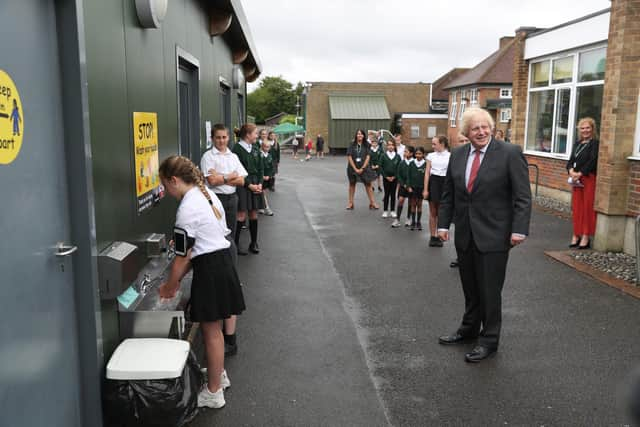New Sheffield school system with kids spending two weeks a month at home ‘should be considered’
and live on Freeview channel 276
That’s according to the city’s National Education Union (NEU) representative, who says more must be done to protect staff, pupils and the wider community from coronavirus.
Staff and students at secondary schools in Sheffield are required to wear face coverings in corridors and other communal areas but not in the classroom, in accordance with government guidance.


Advertisement
Hide AdAdvertisement
Hide AdBut no additional measures have been imposed after the city was placed into Tier 2 lockdown due to its rising Covid-19 infection rate.
Toby Mallinson, of the NEU’s Sheffield & District branch, believes new regulations are needed and serious consideration should be given to a rota system.
The use of rotas is set out in the Government’s guidance for controlling the spread of coronavirus in schools, in the second tier a four-tier framework which is unrelated to the new three-tier lockdown system now in place.
As well as limiting the number of pupils on site at any given time, the guidance says rotas would mean pupils spend long enough at home for the onset of any symptoms to be detected before they return to school, preventing them spreading the virus.
Advertisement
Hide AdAdvertisement
Hide AdMr Mallinson said: "We're not experts but we think a rota system should be considered and probably brought in.
"Public health advisors need to be taking a more nuanced approach because at the moment we have a one-size-fits-all approach.
"I would speculate that 'very high' alert areas should be moving to a tier 2 approach, with rotas in place, at least."
Mr Mallinson also criticised existing government guidance which says masks should not be worn in the classroom, something he claims is happening in other countries and is needed here because it is not always possible to observe social distancing while teaching.
Advertisement
Hide AdAdvertisement
Hide Ad"There are a lot of irrationalities in the Government guidance and it's not safe. Our members in schools, their families and the wider community are being put at risk,” he said.
"It's not credible to say that transmission isn't taking place in schools. The case rate started going up before universities went back."
He added that many schools were in a 'desperate financial situation' due to the added costs for staffing, IT and cleaning, for which they were not getting sufficient funding.
And while pupils at most secondary schools have been complying with the requirement to wear masks in communal areas, at some schools in the city he said as few as 10-20 per cent of students were doing so.
Advertisement
Hide AdAdvertisement
Hide AdA Department for Education spokesperson said: “Schools have implemented a range of protective measures to become covid-secure, as part of their hugely successful work to get the vast majority of children back to the classroom for the autumn term.
“On average, costs to schools to become covid-secure will have been a relatively small proportion of their core funding for each pupil, which for secondary schools has increased to a minimum of £5,150 this year, the first year of the biggest increase to core school funding in a decade.
“All other possible measures, including implementing restrictions on other sectors, would be explored before considering restricting attendance in education.”